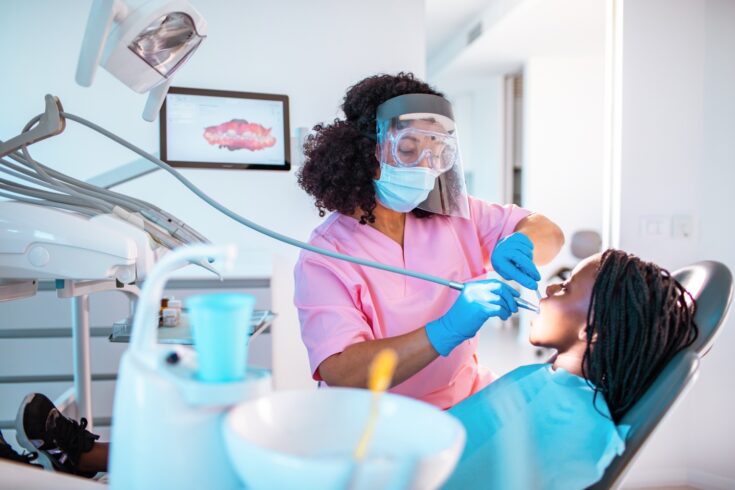Careful selection and operation of dental drills can minimise the spread of COVID-19 through aerosols, says a new report from Imperial College London and King’s College London.
Dental procedures pose a high risk of viral transmission because the tools used often produce aerosols. The aerosols can contain high numbers of SARS-CoV-2 virions, copies of the virus causing COVID-19.
Decontamination processes
While dental practices have reopened, access to routine dentistry is still limited. Practices have had to introduce new decontamination processes, like leaving long intervals between treatments to allow aerosols to dissipate.
This limits patient access and challenges the financial feasibility of dentistry worldwide.
Professor Owen Addison of King’s College London’s Faculty of Dentistry, Oral and Craniofacial Sciences said:
Because of the COVID-19 pandemic, dentistry has become a high-risk practice, but the need for treatments hasn’t gone away. Our suggestions could help begin to open up dentistry to patients once again.
Dr Antonis Sergis of Imperial’s Department of Mechanical Engineering said:
Aerosols are a known transmission route for the virus behind COVID-19, so, with our colleagues at King’s, we have tested suggested solutions that reduce the amount of aerosols produced in the first place. These could help reduce the risk of transmission during dental procedures.
Testing how aerosols are generated
The researchers tested how aerosols are generated during procedures such as:
- decay removal
- applying and polishing fillings
- adjusting prostheses.
They measured the aerosol generation using high-speed cameras and lasers, and they used the findings to suggest modifications.
The researchers found that using air turbine drill types, the most common type of dental drill, creates dense clouds of aerosol droplets that spread as fast as 12 metres per second.
In contrast, using a high torque electric micromotor at low speeds, without air streams, produced 60 times fewer droplets.
The researchers say that by understanding how to reduce the amount of aerosol generated in the first place, their suggestions could help dentists get patients the treatment they need.
An expert task force
Their suggestions have been considered by an expert task force convened by the Faculty of General Dental Practice (UK) and the College of General Dentistry. The suggestions have been published in their guide entitled “Implications of COVID-19 for the safe management of general dental practice”.
The team is currently assessing the risk of infection by quantifying the amount of saliva mixed into the generated aerosols by dental instruments.
The work is supported by:
- Engineering and Physical Sciences Research Council
- LaVision
- Photron
- British Endodontic Society
- Guy’s and St Thomas’ NHS Foundation Trust.
Last updated: 2 June 2023

